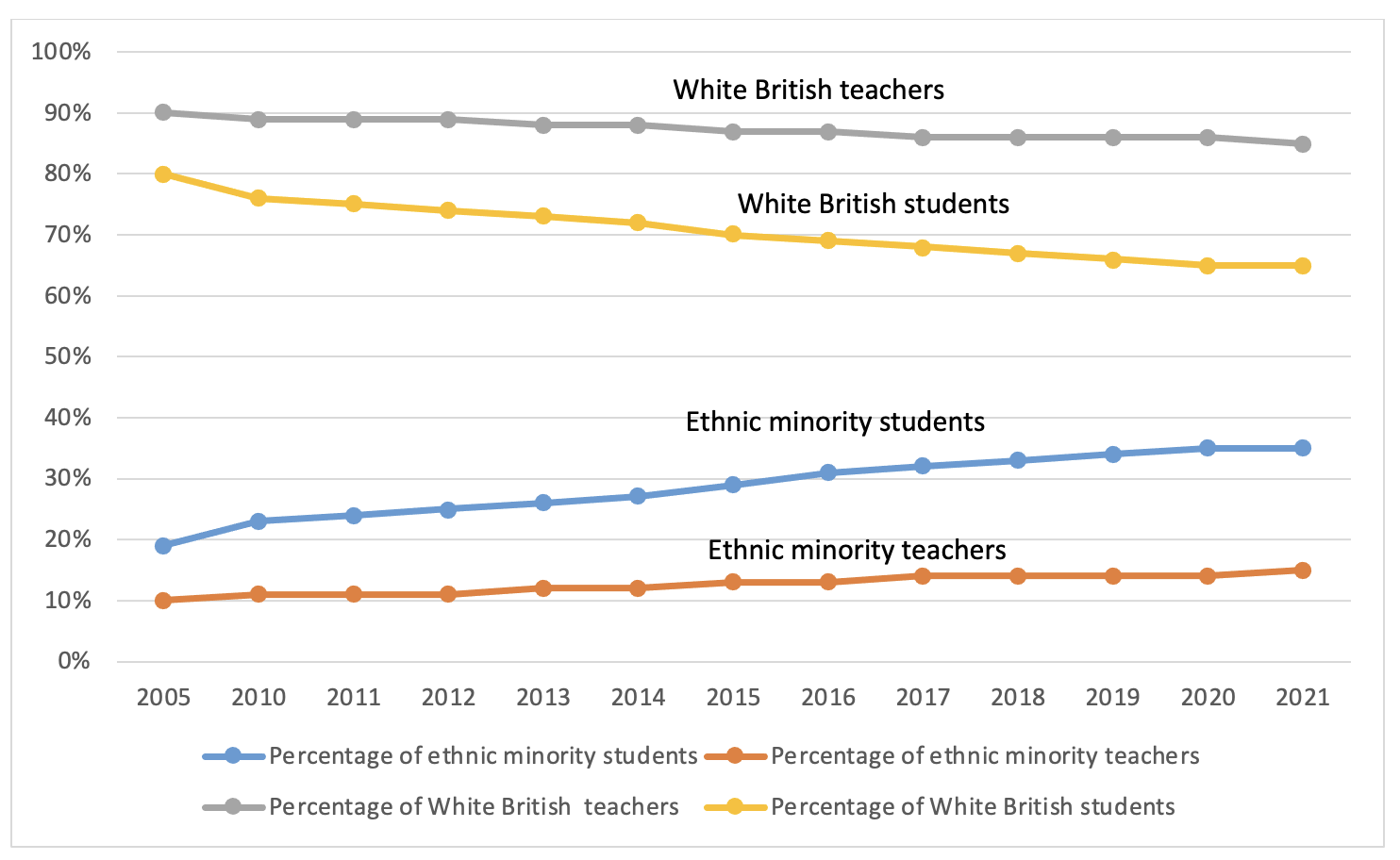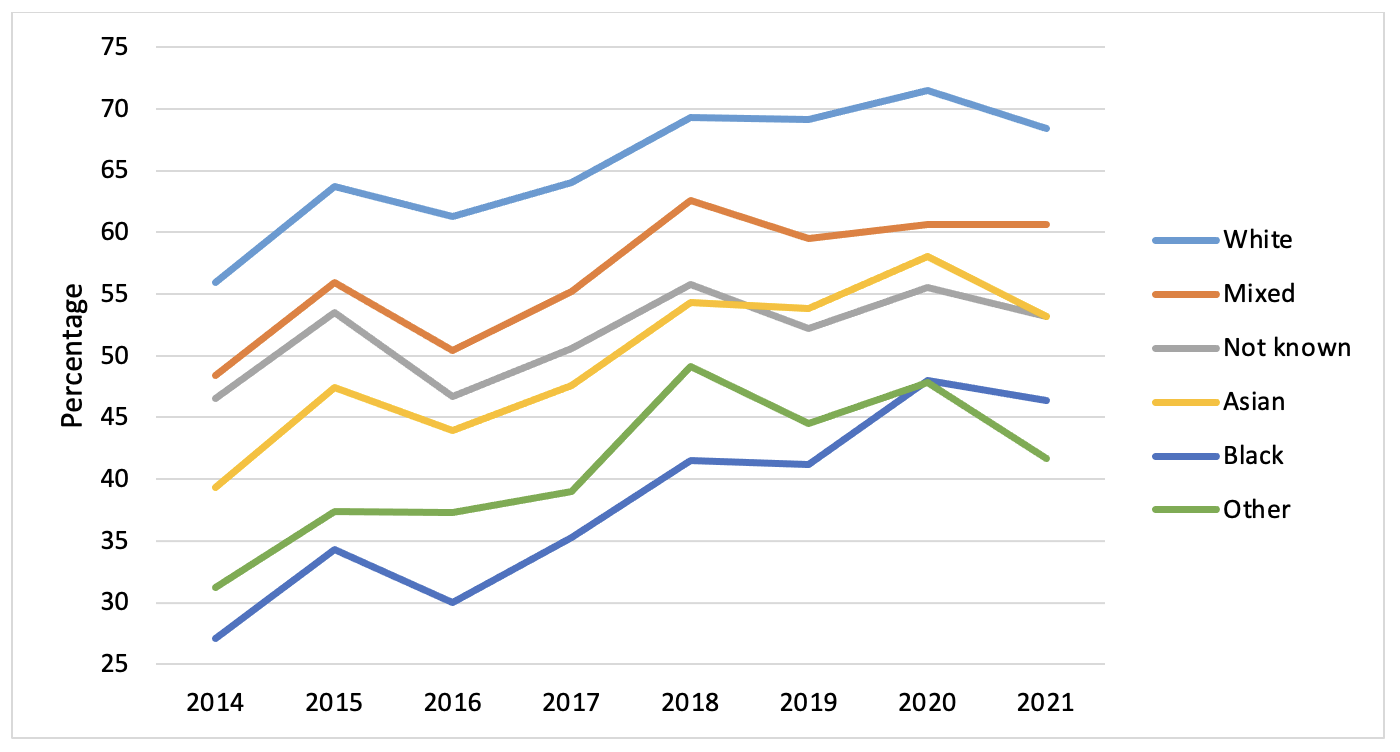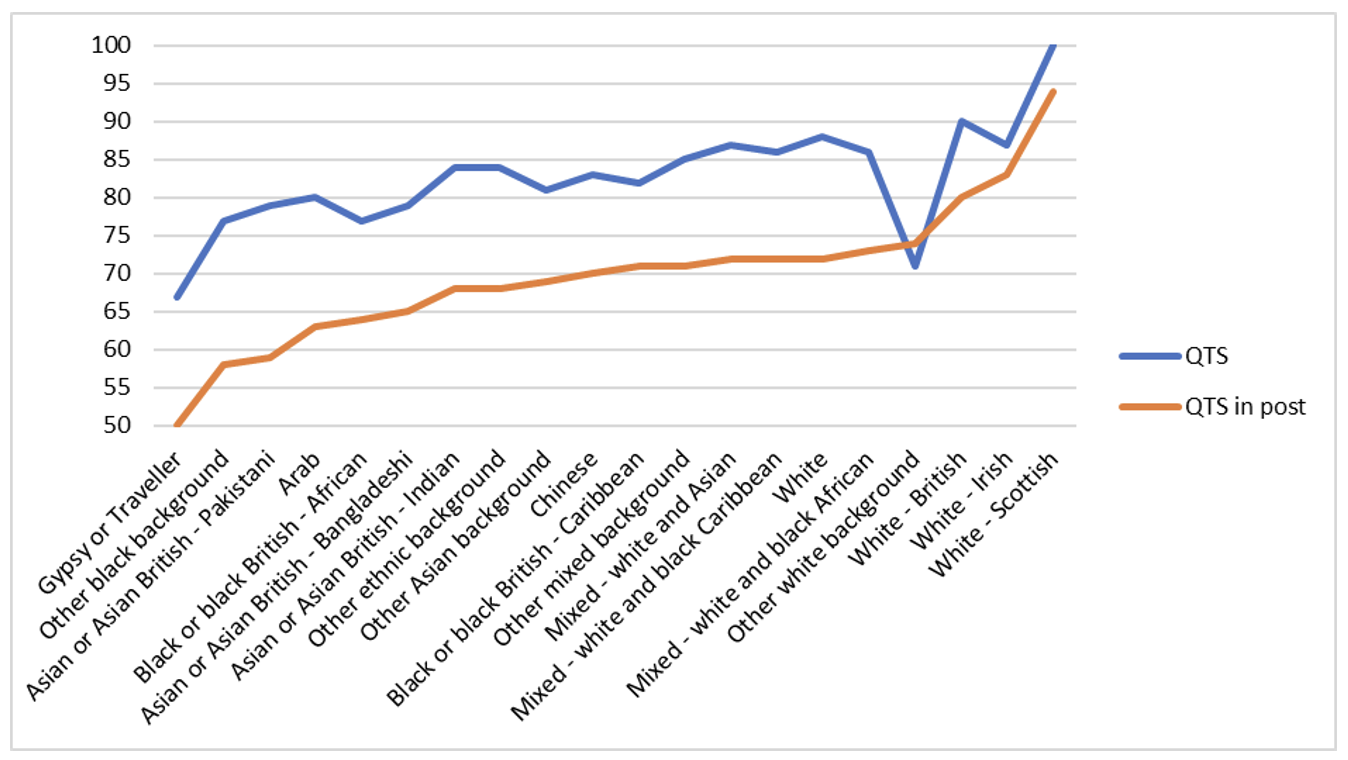85% of teachers in England are White British, and 46% of schools have no racially diverse teachers at all. Does this mean England has a bias against ethnic minority teachers? Beng Huat See from Durham Evidence Centre for Education explores
Evidence of ethnic disproportionality in the school workforce?
Around 70% of the working population is recorded as White British, but 85% of all teachers in state-funded schools in England are White British. This makes teaching a particularly White profession.
Around 66% of the student population is White British, but 86% of teachers and teaching assistants and 93% of school leaders are White British by ethnic background (Gov.UK 2021).
There represents a mismatch between the ethnic makeup of teachers and pupil numbers overall.
Ethnic minority teachers and students are overly clustered in particular areas or schools. For example, they are far more common in London than in the North East. Around 46% of schools had no ethnic minority teachers at all (Morgan & Scarlett, 2021).
Although there has been an increase in the proportion of ethnic minority teachers in the last decade, it still lags behind that of the student population, which has dramatically increased.
The proportion of ethnic minority teachers has increased from 11% in 2011 to 15% in 2021, while that of pupils from ethnic minority backgrounds is now 35%, a rise from 24% a decade ago (Figure 1).
It is this increasing gap in the proportion of minority ethnic teachers and pupils that is a cause for concern for policymakers and school leaders.

Why does diversity in teaching matter?
Diversity in the teaching workforce matters for two important reasons:
It tackles educational inequality and closes the achievement gap of ethnic minority pupils
International evidence suggests that exposure to teachers from a similar race/ethnicity can raise the achievement of ethnic minority students (e.g. Villegas and Irvine 2010; Egalite et al. 2015; Gershenson et al. 2016; Haddix 2016; Grissom et al. 2020; Harbatkin 2021).
Ethnic minority pupils with teachers from similar ethnic backgrounds are less likely to be excluded (Grissom et al. 2009; Lindsay & Hart 2017) and suspended from school (Wright 2015) or drop out (Gershenson et al. 2017). They are less likely to be classified as needing special education (Steifel et al. 2022) and more likely to be referred to a gifted programme (Grissom & Redding 2016; Grissom et al. 2017; Nicholson-Crotty et al. 2011).
Ethnic minority teachers have higher expectations of ethnic minority pupils; they raise their aspirations and are positive role models for them.
It creates a more inclusive and diverse school community that reflects the wider society
Minority ethnic teachers bring different perspectives and life experiences, exposing our children to cultural diversity, which reflects the languages, cultures and ethnic backgrounds of the local community and society at large.

Source: https://www.ucas.com/data-and-analysis/ucas-teacher-training-releases/ucas-teacher-training-end-cycle-2020-data-resources
Why are there not more ethnic minority teachers in our schools?
First, ethnic minority applicants in England are less likely to be accepted into teacher training. This is especially so for applicants identified as Black and Other. Only under 50% have been accepted into initial teacher training across all years, compared to over 70% of White applicants.
Universities and Colleges Admissions Service (UCAS) data showed that 569 (32%) of initial teacher training providers had accepted no ethnic minority applicants at all between 2014 and 2021. While it is possible that some of these providers may not have any ethnic minority applicants, the data also shows that 337 providers had at least over 100 ethnic minority applicants over the eight years. Of these, 37 (9%) had accepted no ethnic minority applicants.
The question had to be asked: Are minority applicants less qualified, have lower entry qualifications, or is there an unconscious bias among teacher training providers, or even institutional discrimination? Or is it the lack of access to application and selection process information? These questions need to be investigated.
Second, even if accepted into training courses, they were less likely to gain a qualified teacher status (QTS) and a teaching post in a state-funded school in England than White British trainees.

What must be done to address the situation?
Identify the root causes of these disparities so that effective solutions can be implemented to address them.
Create more targeted initiatives and programmes such as scholarships, mentorship programs to encourage and support individuals from minority ethnic backgrounds to pursue a career in teaching.
Provide support and professional development opportunities to help retain these teachers in the profession.
Address unconscious bias in relation to recruitment, training, appraisal and professional development of ethnic minority teachers.
Provide appropriate support to newly qualified ethnic minority teachers who may experience a greater sense of isolation as a result of their different cultural background.

This work is licensed under Creative Commons Attribution-NonCommercial-NoDerivatives 4.0 International.


